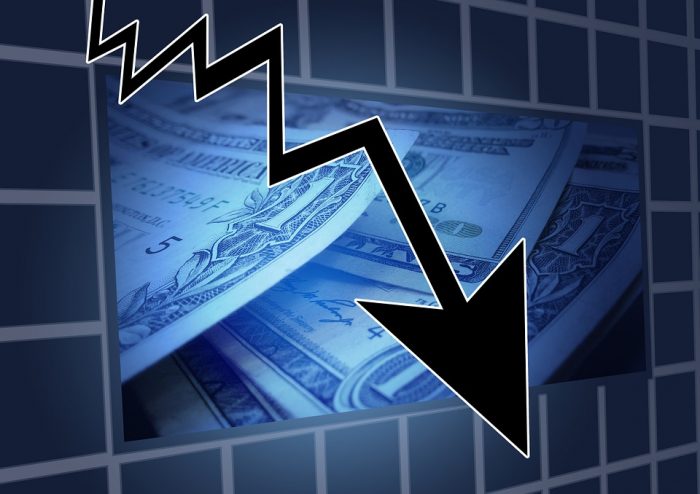On Friday, the Dow Jones Industrial Average fell 666 points (665.75 points to be precise), and many are pointing out that this was the 6th largest single day crash that we have ever seen. This decline happened on the 33rd day of the year, and it was the worst day for the stock market by far since President Trump entered the White House. I have been repeatedly warning that we are way overdue for a stock market crash, and many are concerned that we may be on the precipice of another great financial crisis. We shall see what happens on Monday, because that will set the tone for the rest of the week. If we see another huge decline early Monday morning, that could easily set off full-blown panic selling on Wall Street.
Rising interest rates appear to have been the trigger for the enormous market drop on Friday. The following comes from the New York Post…
“We all know that many bull markets have ended by the Federal Reserve as they raise the rates to the point of slowing the economy down perhaps too much,” Quincy Krosby, chief market strategist at Prudential Financial, told The Post.
“It’s come on quickly and it caught the market off guard,” Krosby said.
The Dow sell-off brought it below the 26,000 plateau — to 25,520.96 — the biggest points drop since Dec. 1, 2008.
It is quite rare for the market to drop this much in a single day. The largest single daily decline was a 777 point drop in 2008, and overall the Dow has fallen by more than 600 points less than 10 times throughout history…
The index posted a loss of nearly 666 points, its sixth-worst decline ever on a points basis.
The last time the index posted a drop of more than 600 points was June 24, 2016, the day after the Brexit vote.
The eight other times the Dow closed more than 600 points lower all took place in the last 18 years. Half occurred during the financial crisis in 2008.
My readers have heard me explain over and over that markets tend to go down a lot faster than they go up.
Once a market landslide begins, the movement can be absolutely breathtaking. But none of this should come as any sort of a surprise, because even the Washington Post admits that “speculation of a market pullback” has been seemingly everywhere in recent days…
The airwaves and online chatter have been flooded in recent weeks with speculation of a market pullback like the one that thundered in on Friday.
“It looks like the beginning of a market correction,” said Luke Tilley, chief economist at Wilmington Trust, the wealth and investment advisory arm of M&T Bank. “It’s not something that is very surprising, given the low volatility that we saw in 2017.”
Right now we are in the terminal phase of a historic “double bubble” in both stocks and bonds. Many times we will see one or the other get clobbered on a particular day, but Friday was a “bloodbath” for all asset classes…
Yesterday’s US equity market collapse and simultaneous bond market bloodbath was the biggest combined loss since December 2015, but perhaps more ominously, the week’s combined loss in bonds and stocks was the worst since Feb 2009.
So what will next week bring?
Hopefully things will settle down and we will see the markets start to bounce back. After a huge decline, that is often what happens.
But it would be foolish to ignore the fear that appears to be growing on Wall Street. At this point, even Bloomberg is openly wondering if this “is the start of something big?”…
Looking at the week’s drumbeat, you can’t help but wonder, is this the start of something big? Warnings about valuations have been pouring forth from bears for so long that barely anyone listens anymore. With the S&P 500 up almost 50 percent in less than two years, some see the end of the blissfully easy money that equities have spewed out for 13 straight months.
“It’s the turning point of volatility,” said Jeffrey Schulze, chief investment strategist at Clearbridge Investments, which manages $137 billion. “We were all very fortunate to go through a year like 2017. But there’s a number of different dynamics this year that will make volatility more part of the equation than it has been in quite some time.”
If the stock market does crash in 2018, it will not be a surprise.
The only surprise will be that it took this long to happen.
As I have stated over and over again, stock prices would need to fall by at least 40 or 50 percent just to get valuations back to their long-term averages, and stock prices always return to their long-term averages eventually.
Hopefully our day of reckoning has not arrived and this financial bubble can continue for a little while longer.
But if financial markets do begin to crash horribly this year, nobody will be able to say that they were not warned well ahead of time.
Michael Snyder is a pro-Trump candidate for Congress in Idaho’s First Congressional District, and you can learn how you can get involved in the campaign on his official website. His new book entitled “Living A Life That Really Matters” is available in paperback and for the Kindle on Amazon.com.
